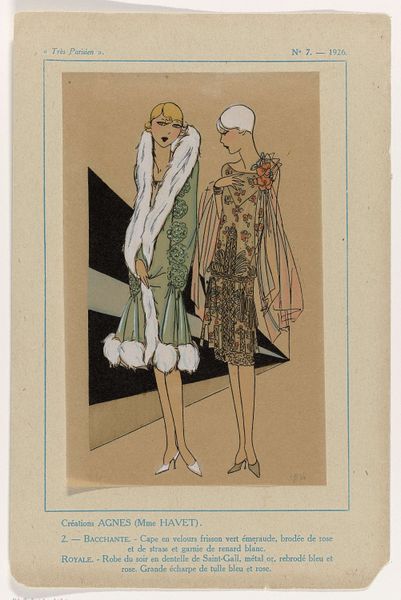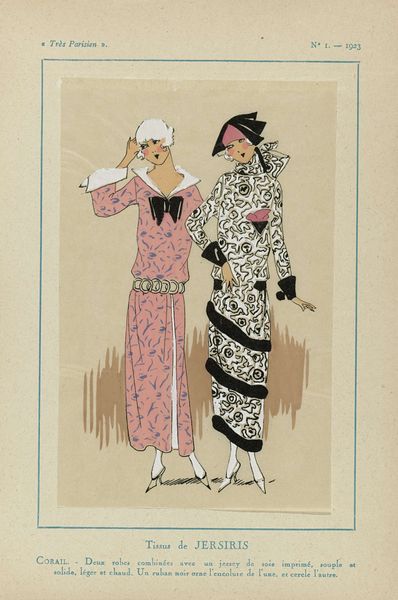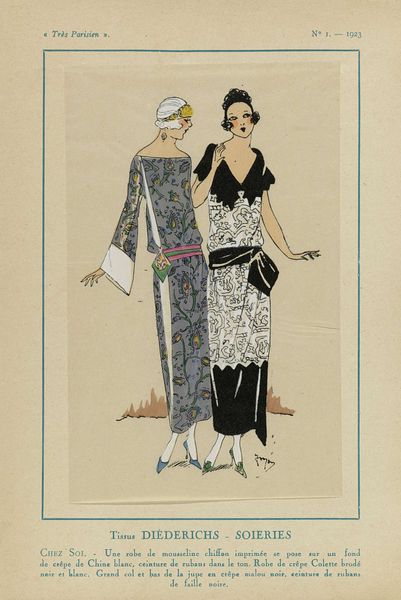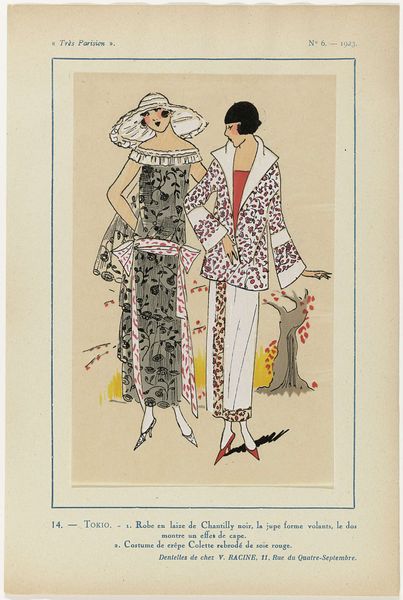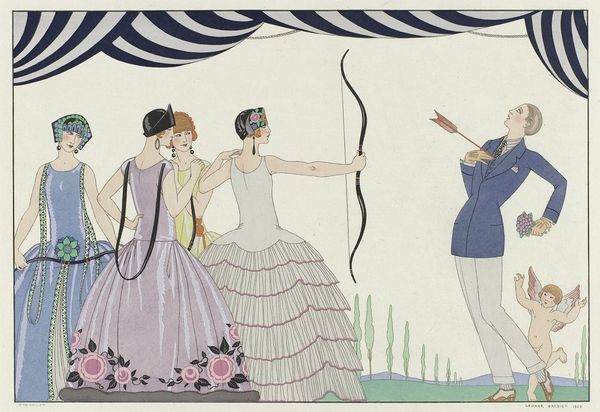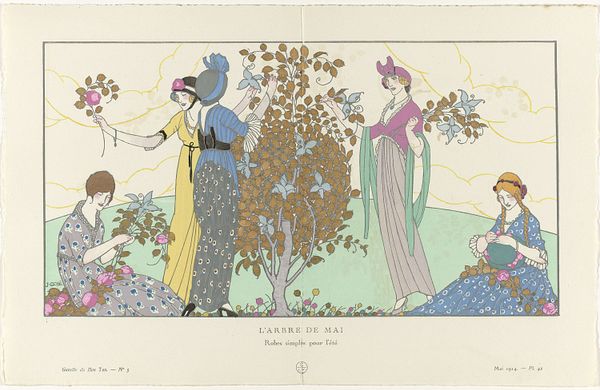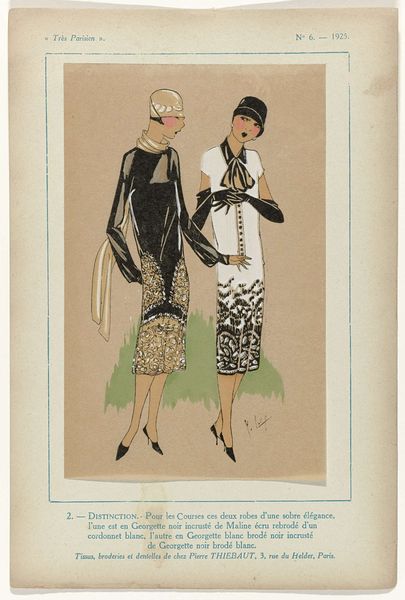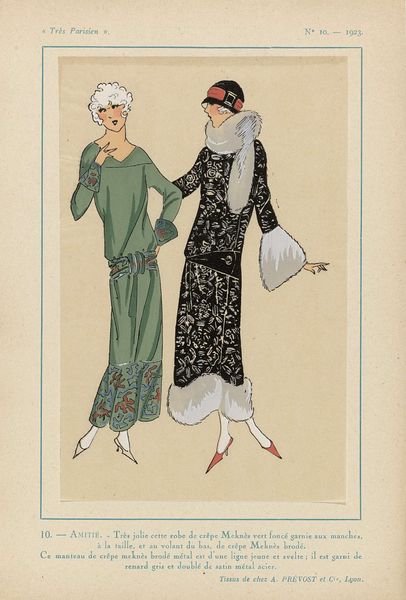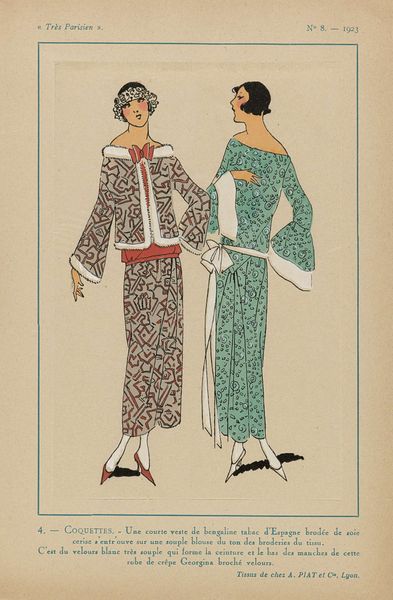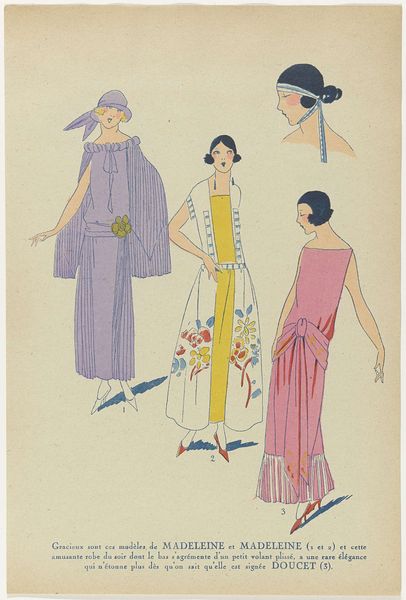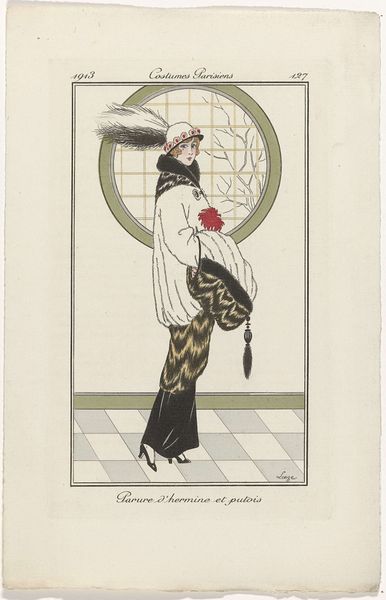
drawing, ink
#
portrait
#
drawing
#
art-nouveau
#
figuration
#
historical fashion
#
ink
#
watercolour illustration
Copyright: Public Domain: Artvee
Editor: So, this is "Les Belles Sauvagesses de 1920" by George Barbier, a drawing made with ink and watercolour. The feathery skirts and delicate lines give it such an airy, ornamental quality, but it is really about fashion. How do you interpret this work? Curator: Looking at this piece through a materialist lens, I’m immediately drawn to the way Barbier utilizes inexpensive and reproducible mediums, like ink and watercolor, to depict what is undoubtedly luxury fashion. What do you think about the relationship between the depiction of haute couture through inexpensive materials? Editor: I suppose that speaks to how images circulate in society, then...making luxury available, but only as an image, accessible across social classes, but not materially. Curator: Precisely. The "sauvages" or "savages" referenced in the title must surely allude to primitivism – a fashion trend appropriating global, indigenous motifs by means of highly cultivated and stylized techniques like pochoir, a stencil-based printmaking popular for commercial purposes during this period. Who benefits from that co-opting? Editor: It feels like a critique of the roaring twenties, perhaps? Its industrial growth built on exploited labour or resources disguised in decorative art? Curator: Exactly! These women present a sort of cultural product. Consumption and artifice become a key aspect of the modernity they present. How does viewing it this way affect your interpretation? Editor: I guess it highlights the production process that has gone into creating the illusion of effortless beauty and high fashion, a commercialized spectacle rather than timeless elegance. It changes how I see Art Nouveau too! Curator: Right? Material and its production tell a much broader story.
Comments
No comments
Be the first to comment and join the conversation on the ultimate creative platform.
